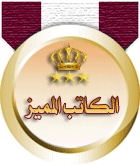Evidence of Islamic State atrocities emerge in north Iraq At first glance, massacre site appears to be place where rubbish has been dumped, but closer inspection reveals bones also lying in ditch.

Biggest graves are in centre of Sinjar
Middle East Online SINUNI: Dirt-covered skulls and bones scattered among ragged clothing in a ditch in north Iraq are all that remain of some two dozen people believed to have been murdered by the Islamic State group.
The blood still staining one side of the ditch and the bullet casings scattered on the ground paint a grim picture of how they died.
The recently discovered site is not unique, and more evidence of IS atrocities will likely emerge as areas retaken from the jihadists by Kurdish forces are searched, a task made more difficult by explosives they left behind.
"Three mass graves have been confirmed -- two in the Hardan area and the other in Sinuni," said Myaser Haji Saleh, the local official responsible for the Sinjar district in the northern province of Nineveh, where the sites are located.
"But we believe that the biggest graves are in the centre of the Sinjar district and areas that are now under (IS) control," Saleh said.
The two graves in Hardan have yet to be excavated, but Saleh said the site near Sinuni contained the remains of about 25 members of the Yazidi religious minority.
IS spearheaded a militant offensive that began in northern Iraq last June and overran large parts of the country, before again turning its attention to the north in August, seizing areas including Sinjar.
The jihadists carried out a campaign of killings, kidnappings, enslavement and rape against Yazidis living in the area that the UN termed an "attempt to commit genocide."
Backed by US-led air strikes and assisted by international trainers and advisers, Iraqi Kurdish forces have made significant gains in the north, driving IS back and retaking areas including Sinuni.
At first glance, the massacre site appears to be a place where old clothes and other rubbish has been dumped, but a closer inspection reveals bones also lying in the ditch.
Skulls, some broken and others still intact, vertebrae, ribs and other bones are mixed among the clothes, shoes and sandals the victims wore when they were murdered.
Kidnappings carried out by IS have left devastated relatives unsure whether their loved ones are alive or dead.
Ali Bazo, who was a resident of the nearby Khana Sur housing complex but now lives in a camp for displaced people, came to the massacre site to search for signs of his father, who was seized by IS when it overran the area last August.
"We learned of the discovery of this mass grave and came and found the keys to our house," he said, but he still does not know which bones belonged to his father.
Bazo said wants experts to examine the remains to identify his father, so he can be given a proper burial.
The first step toward identifying the victims was taken on Wednesday, when the remains were brought to a morgue in autonomous Iraqi Kurdistan for DNA testing, said Fuad Othman, a spokesman for the region's martyrs ministry.
Bizar Hasso also came to search for her missing husband.
When IS advanced toward Khana Sur, she fled to Mount Sinjar, a 60-kilometre (40-mile) ridge near the Syrian border that the jihadists have twice besieged, but two of her sons and her husband were out guarding wells.
One of her sons later told her that IS killed his brother and detained his father.
"We have been looking for him for more than five months," said Hasso, who is also now living in a camp for displaced Iraqis.
Wearing a surgical mask and rubber gloves, Hasso stood among the bones and clothes in the ditch, searching for some sign of her husband.
But she found nothing, and like many other Iraqis, continues to suffer the pain of not knowing his fate. | 







 المشاركات
المشاركات نقاط
نقاط التقييم
التقييم








